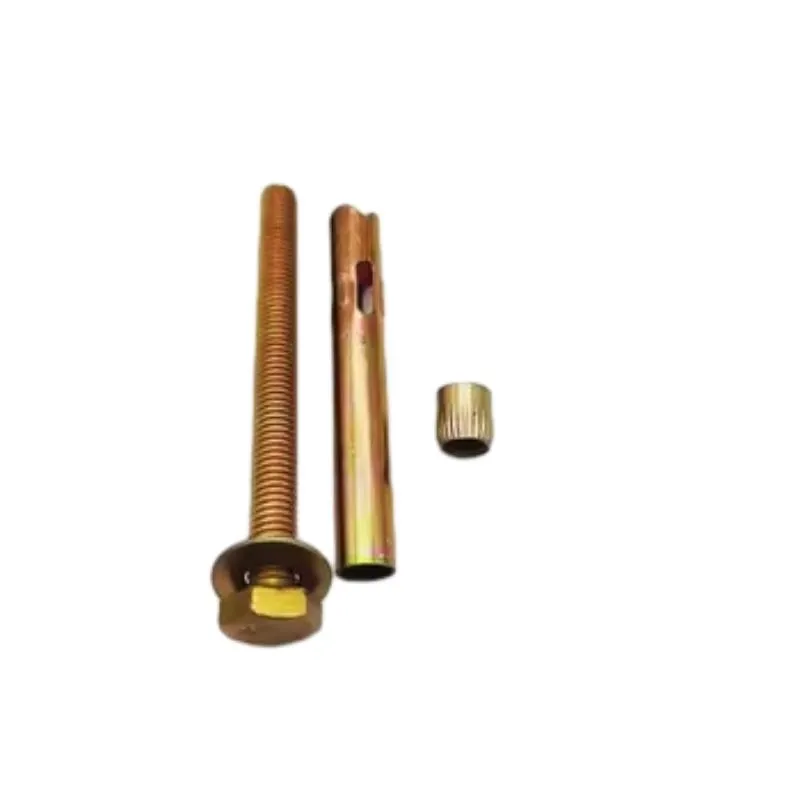Pro . 16, 2024 08:35 Back to list
flange screw
Understanding Flange Screws Essential Components in Mechanical Assemblies
Flange screws are versatile fasteners widely used in various industrial applications due to their unique design and functionality. Characterized by a small flange or collar beneath the head, flange screws provide enhanced grip and load distribution, making them ideal for securing components in numerous mechanical assemblies. This article explores the design, advantages, applications, and considerations for using flange screws in various fields.
Design and Features of Flange Screws
Flange screws typically consist of a head, a flange, a shank, and a threaded section. The flange’s increased surface area distributes the load over a wider area, reducing the risk of material deformation and promoting a more secure grip. Many flange screws come with a range of head styles, including hex, socket, or pan heads, each offering varying installation and aesthetic options. Additionally, flange screws are made from a variety of materials, including stainless steel, carbon steel, and alloy steel, allowing for selection based on environmental conditions, strength requirements, and corrosion resistance.
Flange screws may also feature serrated flanges, which enhance the locking mechanism through increased friction against the mating surface. This prevents loosening during operation, a critical feature in dynamic applications where vibrations might lead to fastener failure.
Advantages of Flange Screws
The use of flange screws offers several significant advantages compared to traditional screw designs. One of the primary benefits is the reduction in the number of fasteners required. The flange allows for larger load distribution, meaning fewer screws may be necessary to achieve the same level of stability. Additionally, flange screws often eliminate the need for separate washers, simplifying installation and reducing costs.
Another critical advantage is the ability to provide a more secure assembly. Their design enables better torque distribution, thereby minimizing the risk of bolt stripping or failure. This feature is particularly important in applications subjected to high stress or dynamic loads.
Furthermore, flange screws facilitate easier installation and removal. The larger flange can serve as a guide for operators, making alignment straightforward. This ease of use is particularly beneficial in assembly lines or environments where rapid assembly is essential.
flange screw

Applications of Flange Screws
Flange screws are utilized in various industries, including automotive, aerospace, construction, and manufacturing. In the automotive sector, they are commonly used in engine mounts, body panels, and various other critical components where structural integrity is vital.
In the aerospace industry, flange screws play a crucial role in securing components that require high precision and durability. Their ability to withstand extreme conditions makes them suitable for use in aircraft assembly, where safety is paramount.
Construction applications also benefit from flange screws, especially in structural applications where load-bearing capability is essential. The enhanced grip provided by the flange helps to ensure that connections remain stable under stress.
Considerations When Using Flange Screws
While flange screws offer numerous advantages, some considerations should be kept in mind. It is essential to select the appropriate screw type and material based on the specific application requirements, such as load capacity, environmental conditions, and compatibility with other materials.
Attention should also be paid to the torque specifications during installation to prevent over-tightening, which can lead to material deformation or screw failure. Additionally, the surface finish of the flange screw and mating part can influence the performance, emphasizing the importance of proper surface treatment.
Conclusion
In summary, flange screws are essential components in modern mechanical assemblies, offering enhanced load distribution, reducing the number of fasteners required, and providing secure connections. With various applications across industries, understanding their design, advantages, and considerations is crucial for engineers and technicians. As technology advances, the continued development of flange screw designs will undoubtedly lead to even more efficient and reliable fastening solutions. Selecting the right flange screw for your application can significantly influence the overall integrity and longevity of any mechanical assembly.


